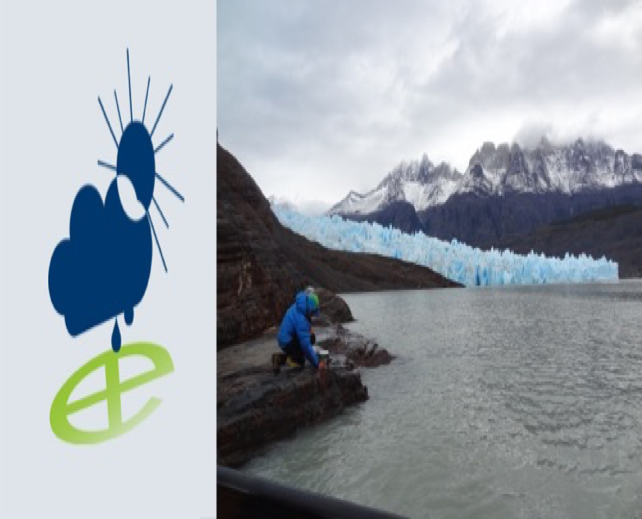Climate response and the interaction of hydro-, atmo- and cryosphere in Southern Patagonia
(Continuation GABY-VASA)

Calving glacier end zone of the Schiaparelli glacier in the Cordillera Darwin below Monte Sarmiento in Chile
(Photo: Lukas Langhamer 2019)
Southern Patagonia, the southernmost part of South America, hosts the largest ice masses in the Southern Hemisphere outside of Antarctica. The three main ice fields, the North Patagonian Ice Field, the South Patagonian Ice Field, and the Cordillera Darwin, extend along the southern part of the Andes from 46°S to 55°S. Unlike the northern hemisphere, there are no other land masses at these latitudes, making the climate conditions unique in the world. Permanent westerly winds transport cool and moist air masses. The mountain range running perpendicular to the prevailing winds prevents air masses from crossing the land undisturbed. The lifting of the air masses results in considerable precipitation on the mountain range, which is estimated to be more than 10,000 mm per year. In contrast, to the east, in the lee of the mountain range, there is a dry climate with total annual precipitation of less than 300 mm, creating one of the sharpest moisture gradients on earth.
The considerable amounts of precipitation in the accumulation zone of the ice masses are essential for the ice masses to reach sea level despite the relatively warm temperatures in the temperate latitudes. The imbalance between ice masses in the accumulation and ablation zones is compensated by the downward flow of ice. Ice flow velocity can reach several meters per day, and eventually calves into fjords or proglacial lakes. The glacier system is very sensitive to climate change. Variations in precipitation and temperature alter the thickness and ice flow velocity, and thus its mass loss through calving.

View from Nunatak to the middle main arm of Grey Glacier, an outlet glacier of the Southern Patagonian
Ice Sheet in Torres del Paine National Park (Photo: Lukas Langhamer 2020)
These changes are studied in the framework of a dissertation in continuation of the Gaby Vasa project and in cooperation with an international research team. Recent changes in the ice masses and their surrounding environment are recorded with automatic weather stations, lake level sensors, ablation stakes, remote sensing data, water isotope analyses and time-lapse cameras. In combination with global reanalysis data, glacier and climate models, the interaction between hydro-, atmo- and cryosphere can be investigated.
Camera time series:

DSLR-camera system - Canon EOS 1200D
Images from a time-lapse camera from march 2020 to January 2022 at Glacier Schiaparelli, Cordillera Darwin, Chile; the camera is part of the research project GABY-VASA on climate and glacier variability in southernmost South America.
Images from a time-lapse camera from March 2019 to July 2020 at Glacier Grey, Southern Patagonian Ice Sheet, Chile; the camera is part of the research project GABY-VASA on climate and glacier variability in southernmost South America.
Images from a time-lapse camera from March 2015 to March 2016 at Glacier Grey, Southern Patagonian Ice Sheet, Chile; the camera is part of the research project GABY-VASA on climate and glacier variability in southernmost South America.
Images taken by a time-lapse camera from October 2016 to April 2018 at Glacier Grey, Southern Patagonian Ice Sheet, Chile; the camera is part of the research project GABY-VASA on climate and glacier variability in southernmost South America.
Images from a time-lapse camera from September 2015 to October 2016 at Glacier Schiaparelli, Cordillera Darwin, Chile; the camera is part of the research project GABY-VASA on climate and glacier variability in southernmost South America.
Images from a time-lapse camera from March 2017 to April 2018 at Glacier Schiaparelli, Cordillera Darwin, Chile; the camera is part of the research project GABY-VASA on climate and glacier variability in southernmost South America.
Team:
- Lukas Langhamer, M. Sc (Humboldt-University Berlin)
- Prof. Dr. Christoph Schneider (Humboldt-University Berlin)
- Prof. Dr. Tobias Sauter (Humboldt-Universität zu Berlin)
Duration:
The duration of the project is five years: 2018 –2023
